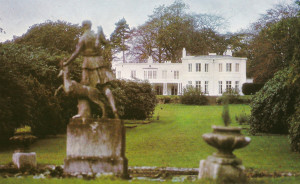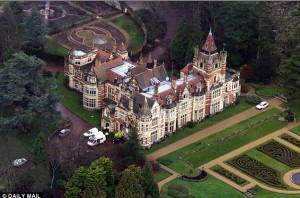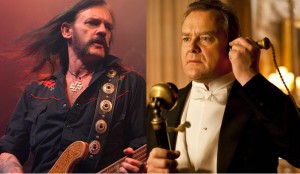Where a rock-n-roll martyr plays
You’ll find the enchanted neighborhood
Of Brian Jones’s drug-haze days.
Brian the posh, Brian the posh,
A randy little dandy – all fine, divine.
He’s Brian the posh, Brian the posh,
A ritzy little glitzy old soul.
I’d hate like hell to be sued by the Disney Empire for parodying their Winnie the Pooh tune, but what better way to introduce the tale of a Rolling Stone who spent his final days in the former domain of Pooh’s creator, author A. A. Milne? Were British society highbrows appalled by the idea of a long-haired rock guitarist/drug deviant romping the idyllic grounds that inspired Milne to create cutesy make-believe animal playmates for his son Christopher Robin? Probably. But it mattered not. The late 1960s marked the dawn of the Age of the Rock God, and like the deities of yore, they required grand pantheons. They found them in the form of once-venerated estates that dotted the tranquil British countryside. And the old gentry had no choice but to get over it.
In November 1968, Rolling Stones founder, multi-instrumentalist, and fashion plate Brian Jones purchased the Milne estate – Cotchford Farms in East Sussex- for £35,000 ($679,000 today). The 26-year-old musician was a train wreck of a man. He’d already been convicted twice for drug possession and had fathered at least five children with five different women by the time he was 23. British blues pioneer Alexis Korner described the once-beautiful lad as now looking like “a fat, mummified Louis XIV.” What better place for the delicate Brian to relax and play his music than the “House at Pooh Corner”?

He quickly set about renovating the mid-16th century abode to his mod liking. Several items from Brian’s upgrades remain today, including panes of colored glass and a still-functioning pink fluorescent light tube he put in one of the bathrooms. And of course, there’s the pool where Mr. Jones drowned on July 3, 1969, just weeks after his bandmates fired him for bad behavior. Whether Jones’s drowning was the result of his prodigious drug and alcohol intake, or a scuffle between him and building foreman Frank Thorogood, we’ll never know. But the death certainly casts an eerie shadow over the bucolic setting.
Alastair Johns, who purchased Cotchford Farm in 1970 and remained its guardian for 42 years, has plenty of interesting tales of Brian Jones fans who dropped by the house, unannounced, to pay homage to the rock star. He once told the Daily Telegraph, “On the whole the Brian Jones lot are incredibly nice and polite. They apologize for the intrusion. The Winnie the Pooh bunch, on the other hand, think they own the place. One afternoon we caught a couple in the garden who had lined up 16 teddy bears to photograph.”
But oh, that famous pool! Old utility bills show that Brian Jones purchased 4,000 gallons of oil trying to heat it during the 9 months he lived there. To finance its renovation, Johns and his wife Harriet sold the original pool tiles to the musician’s fans for £100 each. Imagine owning a piece of Brian’s death tank!
The 3,779-square-foot home and its 9.5 acres was put up for sale in 2014, listed at £2 million, or about $3.15 million. Picture yourself sitting in Christopher Robin’s garden, sipping port or smoking pot, and daydreaming about Eeyore and Piglet and Tigger, to the strains of Brian’s sitar work on “Paint it Black.” It doesn’t get any more surreal than that, folks.
Not to be upstaged by the guitarist he sacked, Mick Jagger spent £55,000 to acquire his own ostentatious crib, Stargroves, in 1970. This Hampshire County estate was the home of the Goddards, a landed family, from 1565 until about 1830. Oliver Cromwell, the 17th century Lord Protector of the Commonwealth of England, Scotland and Ireland, once slept there – back when it was quiet. Three hundred years later, Stargroves would be overrun with racket, when the Stones, Led Zeppelin, Deep Purple, and other rock groups recorded songs in a mobile recording studio installed on the grounds. Rod Stewart bought Stargroves in 1998, but never moved in because he was in the process of divorcing wife number 2, Rachel Hunter.
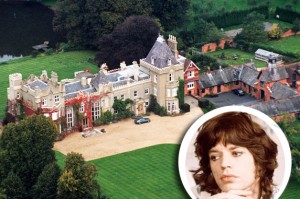
Several other Rolling Stones also inhabited pedigreed mansions. Low-profile drummer Charlie Watts purchased the one-time estate of Baron Shawcross, the lead British prosecutor at the Nuremberg War Crimes tribunal. And in 1968 Stones bassist Bill Wyman acquired Gedding Hall, below, a stately home that boasted a moat (alligators not included). Britain’s famous twin-brother gangsters, Ronnie and Reggie Kray, fled to the hall after killing Jack ‘The Hat’ McVitie in 1967.

One month after John Lennon married Yoko Ono, the Beatle purchased a quaint little love nest: the 72-acre Tittenhurst Park in Sunningdale, Ascot. The couple bought the £145,000 estate from Peter Cadbury, whose father Egbert was managing director of the famous chocolate company that bears his surname.
However, it turned out not to be such a sweet deal. The Lennons ended up spending twice the purchase price on renovations and additions, including the creation of a lake and the installation of a sound studio where John recorded his Imagine LP. He spent a mere two years in his stately home, selling it to Ringo Starr after he permanently relocated to New York City in 1971.
Beatle George Harrison may have felt musically overshadowed by bandmates Lennon and McCartney, but when it came to real estate, he trumped them all. In 1970 he purchased the grand Friar Park, a 120-room Victorian neo-Gothic mansion in Henley-on-Thames. Sir Frank Crisp, an eccentric lawyer, first owned the estate and designed many of its attractions, including an Elizabethan garden, a white garden, a Japanese garden, a rock garden, plus an assortment of unusual topiary and exotic plants. Other features included fountains, whimsical statuary, a sandstone replica of the Matterhorn, and caverns under the property’s lakes that revealed waterways and a grotto!
Upon Crisp’s death the estate passed to an order of Roman Catholic nuns who abandoned the home in the late 1960s, leaving it in such a state of disarray that it was scheduled for demolition. George and his first wife Patti set out to slowly renovate the massive estate. They completed only a handful of the many rooms, one of which George converted to a 16-track recording studio where he produced all of his albums from 1973 onward.
Through the years the Beatle became a passionate gardner, lovingly tending the grounds right up until his death in 2001. His second wife, Olivia, is devoted to maintaining the gardens that brought her husband such pleasure.
From peaceful gardens we move on to unholy houses — in particular, one purchased by Led Zeppelin’s Jimmy Page in 1971. The guitar wizard had long been fascinated with the work of English occultist, poet, novelist, and satanist Aleister Crowley. Between 1899 and 1913, the self-proclaimed “most wicked man in the world” owned Boleskin House, located on the shore of Loch Ness in Scotland. The late 18th century secluded estate was known to be a center of black magic and sorcery, and was the scene of several tragic deaths, both before and after Crowley’s ownership.
Jimmy Page once called Crowley “a misunderstood genius of the 20th century.” He believed the estate was haunted, but he’s long maintained that the house was possessed of demons well before Crowley purchased it to perform his black magic rituals. Said Page in a 1975 Rolling Stone interview, “There were two or three owners before Crowley moved into it. It was also a church that was burned to the ground with the congregation in it. Strange things have happened in that house that had nothing to do with Crowley. The bad vibes were already there. A man was beheaded there, and sometimes you can hear his head rolling down.” Well, at least now you know what inspired some of those mystical Zeppelin tunes and symbols.
Over the years, many a stiff-lipped British Lord and Lady no doubt proclaimed “there goes the neighborhood” when nouveau rich rockers began running wild in the country. If Downton Abbey stays on the air long enough, will we see benevolent Lord Grantham selling out to bad-ass Lemmy Kilmister?
This delightful music video of George Harrison’s “Crackerbox Palace” was filmed on the lovely grounds of Friar Park in 1976. Monty Python member Eric Idle directed it. In 1978, George put up the entire Friar Park estate as financial collateral to fund the Pythons’ “Life of Brian” after the project’s original investors backed out. Why? He said he simply wanted to see the film. Idle called it “the most expensive movie ticket in history.”
© Dana Spiardi, Jan 3, 2015
]]>
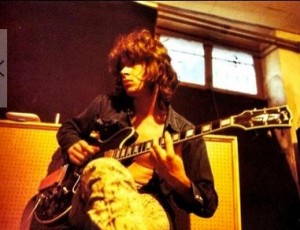 Michael Kevin Taylor epitomized the term “teenage blues.” When Rock-God-of-the-Day Eric Clapton failed to show up for a performance with John Mayall’s Bluesbreakers in 1965, young Mick approached Mayall from the audience and asked if he could “fill in.” It was a brave move for a shy boy of 16. And it paid off. Mick ended up touring and recording with the Bluesbreakers, honing his skills and catching some fire.
Michael Kevin Taylor epitomized the term “teenage blues.” When Rock-God-of-the-Day Eric Clapton failed to show up for a performance with John Mayall’s Bluesbreakers in 1965, young Mick approached Mayall from the audience and asked if he could “fill in.” It was a brave move for a shy boy of 16. And it paid off. Mick ended up touring and recording with the Bluesbreakers, honing his skills and catching some fire.
Within months of Brian Jones’s psycho-physical meltdown and eventual sacking by Jagger et al, Taylor would evolve from a blues-breaker to a stones-shaker, joining the world’s greatest rock band at the recommendation of Mayall. The man-child dubbed “Little Mick” soon found himself in the studio, providing overdubs on “Honky Tonk Women” and several tracks on the classic “Let it Bleed” LP. His first live gig with the band was on July 5, 1969, in London’s Hyde Park. This free concert was dedicated to the fragile, Byronesque Jones, whose drowning death two days earlier was officially attributed to “misadventure.”
With Taylor fully ensconced in the band, “the music changed, almost unconsciously,” said Keith Richards in his memoir Life. His smooth, lyrical guitar style was the perfect contrast to Keith’s rough and ragged approach. “We did the most brilliant stuff together, some of the most brilliant stuff the Stones ever did,” said Richards. “He had a lovely sound, some very soulful stuff.”
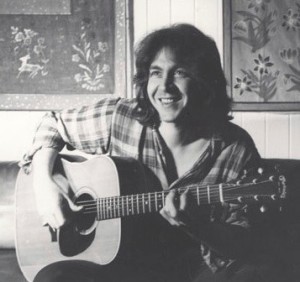 Novice fans may not realize just how big a role Mick Taylor played during the production of those seminal Stones LPs, particularly “Exile on Main Street,” which was recorded in an environment of total debauchery in the basement – an electric opium den of sorts – of an old mansion named Villa Nellcôte in the south of France. Mr. Taylor stayed the course and held his own during a chaotic period marked by Keith’s burgeoning heroin addiction.
Novice fans may not realize just how big a role Mick Taylor played during the production of those seminal Stones LPs, particularly “Exile on Main Street,” which was recorded in an environment of total debauchery in the basement – an electric opium den of sorts – of an old mansion named Villa Nellcôte in the south of France. Mr. Taylor stayed the course and held his own during a chaotic period marked by Keith’s burgeoning heroin addiction.
Mick’s days with Jagger and Richards and their ragged company began with a baptism-by-fire, and rolled at full-tilt speed till the end. The boyish-looking guitarist left the band in 1974, after five life-changing – make that life-shattering – years marked by grueling, violence-tinged gigs (Altamont in particular), drug-drenched studio sessions, and assorted mayhem and melees. He went on to make well-respected music with other bands, took part in several Stones projects through the years, and toured with the band during their 50th anniversary tour in 2013. His face-offs with Mick Sr. during the tour’s “Midnight Rambler” performances were electrifying. For many concert goes (including me) that number was the highlight of the show.
Mick Taylor stamped a signature sound onto some of the greatest recordings in rock history – and emerged a survivor of modern music’s most hedonistic era. And for that I raise a loving cup to the mega-talented, incredibly low-keyed guitarist.
Here’s Mick, at his best, on that stickiest of classic LPs! That’s the great Bobby Keys on sax.
© Dana Spiardi, Jan 17, 2015
]]>
